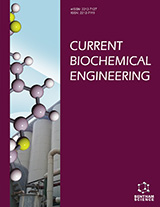Abstract
Background: Computational fluid dynamics (CFD) came into existence with great success, thereby replacing the traditional methods used to simulate the problems related to the flow of fluid. First CFD utilitarian was introduced to the world in 1957, which was developed by a team at Los Alamos National Lab. For tremendous performance and to meet the expected results with ease for modern process conditions, engineers are now more inclined towards the use of simulation software rather than traditional methods. Hence, in the current scenario with the advancement of computer technologies, “CFD is recognized as an excellent tool for engineers to resolve real-world problems.”
Introduction: CFD is defined as a branch of fluid dynamics which involves the use of numerical analysis and data structure to solve complications related to the flow of fluids (gasses or liquids). CFD is based on three major principles that are mass conservation, Newton's second law, and energy conservation. CFD has extended to a number of applications at an alarming rate in every field such as in aerospace, sports, food industry, engineering, hydraulics, HVAC (Heating, Ventilating, and Air conditioning), automotive, environmental, power generation, biomedical, pharmaceutical, and many more. Hence, a number of software like ANSYS, Open Foam, SimScale, Gerris, Auto desk simulation, Code_Saturne, etc, are beneficial in order to execute the operations, and to find the solution of realworld problems within a fraction of seconds.
Methods: CFD analysis involves three major steps; pre-processing, solution, and post-processing. Preprocessing deals with defining model goals, identification of domain, designing, and creating the grid. Solution involves setting up the numerical model, computing, and monitoring the solution; whereas, post-processing includes results of the examination and revision of the model.
Result: The review includes current challenges about the computational fluid dynamics. It is relevant in different areas of engineering to find answers for the problems occurring globally with the aid of a number of simulation-based software hereby, making the world free from complex problems in order to have a non-complicated scenario.
Conclusion: Computational fluid dynamics are relevant in each, and every kind of problem related to the fluid flow, either existing in the human body or anywhere. In the contemporary era, there are enormous numbers of simulation-based software, which provide excellent results with just one click, thereby resolving the problems within microseconds. Hence, we cannot imagine our present and upcoming future without CFD, which has ultimately made the execution of work easier, leaving behind non-complicating scenarios. Lastly, we can conclude that “CFD is a faster, smarter, and lighter way in designing process.”
Keywords: Computational fluid dynamics, experimental fluid dynamics, analytical fluid dynamics, fluid mechanics, preprocessing, post-processing.
Graphical Abstract
[http://dx.doi.org/10.1016/j.ijpharm.2018.01.044 ] [PMID: 29421301]
[http://dx.doi.org/10.5194/nhess-12-1213-2012]
[http://dx.doi.org/10.7763/IJMMM.2016.V4.224]
[http://dx.doi.org/10.1016/S0034-3617(14)70042-6]
[http://dx.doi.org/10.1016/0009-2509(96)00021-8]
[http://dx.doi.org/10.1016/j.buildenv.2010.09.010]
[http://dx.doi.org/10.1016/S0168-1699(01)00177-6]
[http://dx.doi.org/10.1115/1.1530637]
[http://dx.doi.org/10.1243/095440605X31463]
[http://dx.doi.org/10.1090/noti1095]
[http://dx.doi.org/10.4271/2015-01-0672]
[http://dx.doi.org/10.1533/9781908818324.233]
[http://dx.doi.org/10.12989/sem.2000.10.4.313]
[http://dx.doi.org/10.1007/s10915-015-0119-z]
 5
5
















